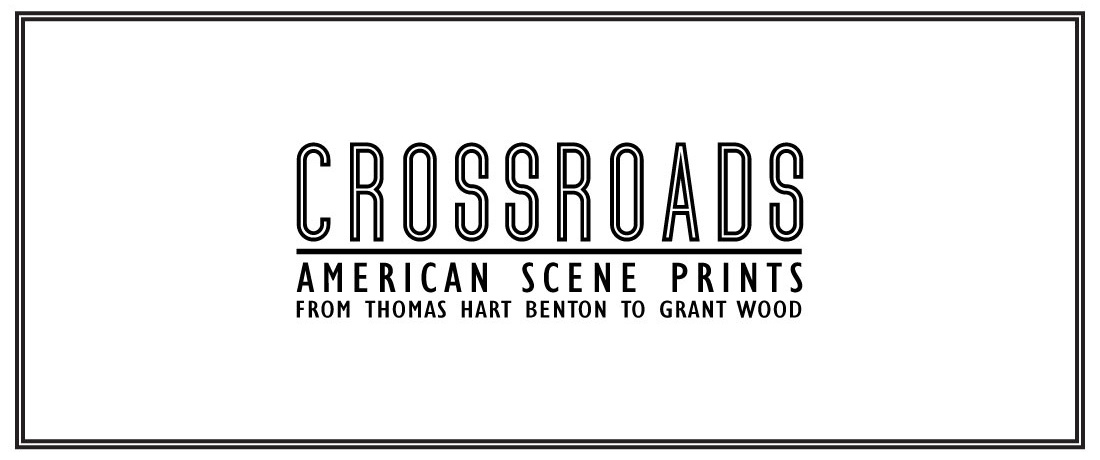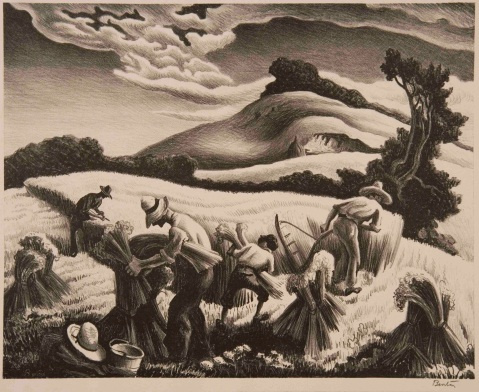Rapid industrialization of cities and the nation’s expansion westward. The Roaring Twenties and the Great Depression. The rise of Fascism in Europe and America’s involvement in two global wars. During the first half of the twentieth century, the United States experienced tremendous social and cultural change. Artists responded by developing a uniquely American aesthetic based on realism and American subject matter, from towering skyscrapers and sweeping landscapes to sheep shearers and cement finishers. In prints that span 1905–55 and drawn entirely from the permanent collection of the San José Museum of Art, artists depict both urban scenes and images of the heartland, reinforcing an American identity centered on working-class values.
Artists featured in the exhibition include Peggy Bacon, George Bellows, Thomas Hart Benton, Alexander A. Blum, Phillip Cheney, John E. Costigan, Churchill Ettinger, Don Freeman, Gerald K. Geerlings, Leon Gilmour, Albert Heckman, Edward Hopper, Yasuo Kuniyoshi, Clare Leighton, Martin Lewis, Louis Lozowick, Luigi Lucioni, William Maclean, Joseph Margulies, Reginald Marsh, Jay McVicker, Joseph Pennell, John Sloan, Charles Surendorf, Otto Wackernagel, and Grant Wood.
Press
San Jose Museum of Art: 'Crossroads,' Metro Silicon Valley (Metroactive)
December 20, 2017
Sponsors
- Sponsored by Doris and Alan Burgess

